Train travel in Ireland.
Can i travel from ireland to mainland europe by train
If you haven’t read our Ultimate Guide to Travelling Europe, here’s the short version…
Travelling Europe by train is easy, comfortable, scenic and efficient. Compared to flights your journeys will be easier and more comfortable – plus there’s far less risk of being caught with extra charges for luggage or checking in! Most parts of Europe have excellent high-speed networks, and even on slower routes you’ll still get amazing views and more space to stretch your legs. Overland travel gives you a great chance to see the landscape change in front of your eyes – from mountains to coastal vistas and rolling countryside. Bring a picnic, or head to the buffet carriage to enjoy lunch with a view. If you fancy a touch of luxury, you can upgrade to first class to make the experience extra special.
Once you arrive, you’ll generally find yourself right in the heart of the city, making it easy to get to your accommodation quickly. No messing about with baggage reclaim or taxis required!
There are loads of different way to sort out your travels in Europe, and if you don’t want to deal with organising all the tickets, Eurail/Interrail passes, seat reservations, supplements and more, then let us do the work for you.
Interrail vs. Eurail
What is Interrail/Eurail?
Interrail and Eurail passes are two types of European rail pass, used for travelling Europe by train.
Both types of pass are very similar in usage – your nationality or residence decides which sort of pass you need.
Each pass allows you to travel within and between European countries by train. The passes are valid for a set number of travel days within a usage period.
Should I buy an Interrail or a Eurail pass?
You are eligible for an Interrail pass if you’re:
1. A European citizen (or if you have dual citizenship) and you hold a European passport.
2. A non-European citizen who has lived in a European country for at least 6 months.
You need a Eurail pass if neither of these rules applies to you.
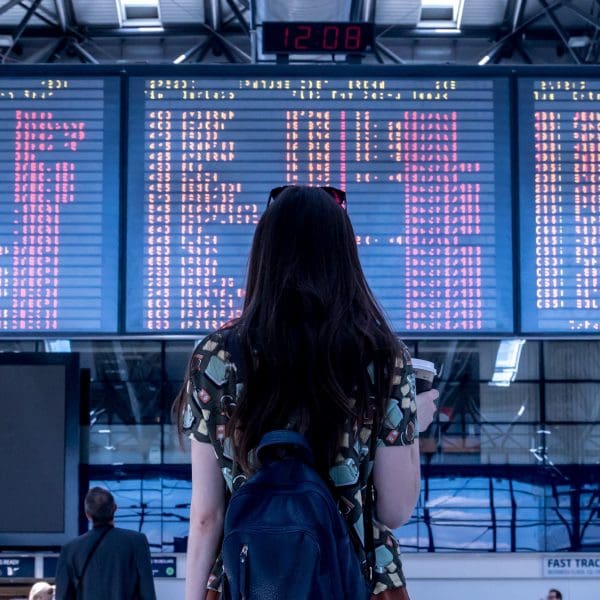
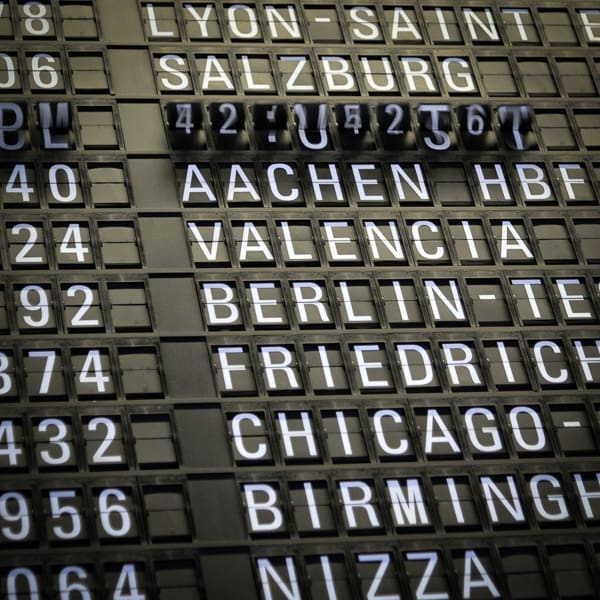
What kind of Interrail/Eurail passes are there?
Both Interrail and Eurail passes come in different types, and are available for people of all ages (so not just students!).
There is a reduction in price for under 28s and for over 60s – so make sure you let us know the correct age group, or your pass won’t be valid. Don’t think you can pay less by “looking young” – unfortunately, your passport number and date of birth will be printed on the ticket – so you probably won’t get away with it!
One country vs. global passes:
Interrail and Eurail passes come in a variety of different prices, and you can buy either a “Single Country” or a “Global” pass. For the global pass, you’ll also need to choose how long you want to use the pass for:
- You can buy a Single Country pass which is always valid for 1 month, but only within one country (or a selection of countries in the case of the Benelux pass).
- Or, you can buy a “Global” pass which is valid across the whole of Europe (or, at least most of it). You can choose how long you want to use them for: from 5 days up to 60 days! Each option has a different price.
As well as choosing how long you want the pass to be valid for, there is an option to select how many “travel days” you want. Don’t worry, we take all of this into account for every package, so you don’t have to work it out yourself!
What is an Interrail travel day?
An Interrail “Travel day” is a day when you will be using your pass to travel by train from one of your destinations to the next. There is no limit on the number of trains you can get within the 24 hour period from midnight.
Within the usage period (of up to 2 months) you will be asked how many “travel days” you want to have.
For interrail the options (from cheapest to most expensive) are:
- 5 travel days within a period of 1 month
- 7 travel days within a period of 1 month
- 10 travel days within a period of 2 months
- 15 travel days within a period of 2 months
- Travel every day within a period of 22 days
- Travel every day within a period of 1 or 2 months
For Eurail the number of days are slightly different, but the principle is the same. Already got your Interrail or Eurail pass and not sure how to use it? Check out our step by step guide on how to use your Interrail/Eurail pass.
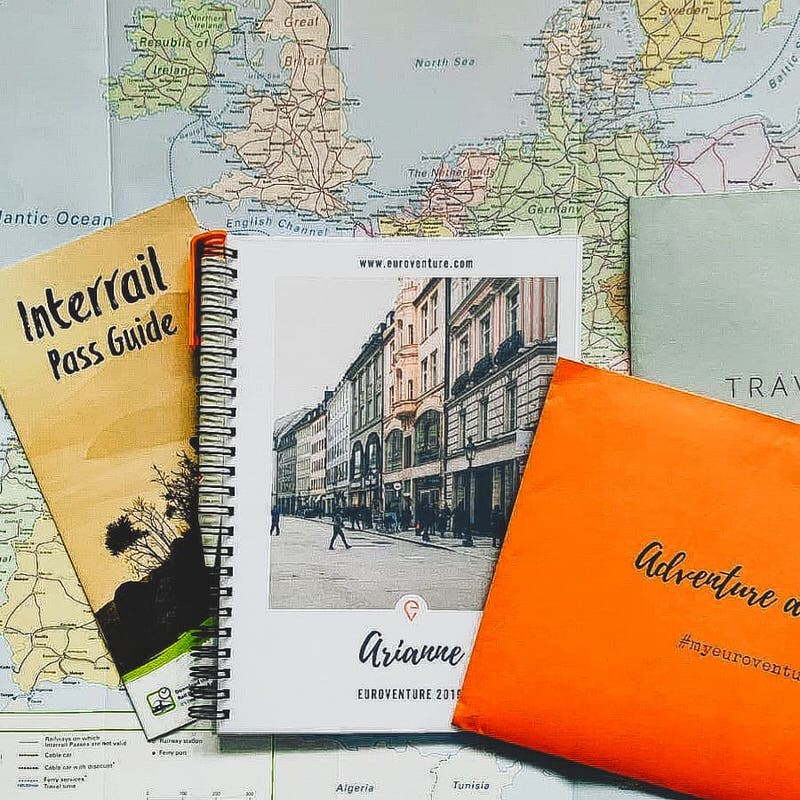
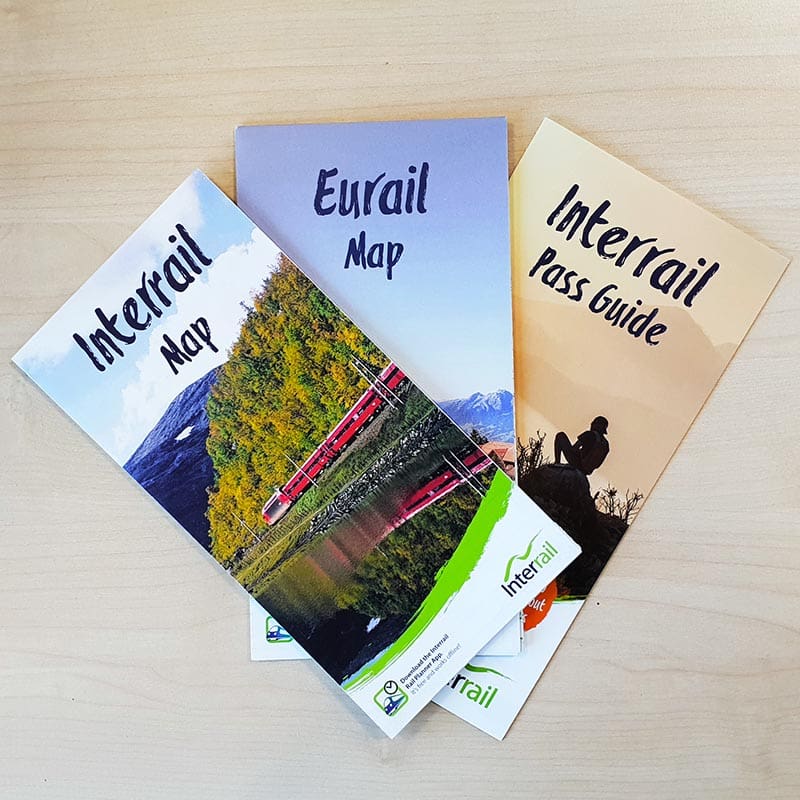
How do I know what kind of Interrail/Eurail pass I need?
For most people, the best way to work out what kind of pass you need is to first work out your route and then plan how long you’ll be travelling Europe by train. Next, work out how many travel days you will be taking. Then you need to work out which journeys will require additional seat reservations, and work out how much it will cost to buy those on top.
Unfortunately, the addition of Interrail reservations can make choosing your pass quite confusing. Sometimes the high cost of certain interrail reservations means that it makes more sense to choose a cheaper pass and buy a few extra tickets at full price, but then you’re into all sorts of comparisons and calculations…
So where do you start. Luckily when you book with us, we work out exactly which tickets, passes and reservations you’ll need and which combination works out the cheapest.
Let’s talk more about these pesky reservations…
Seat Reservations
What is an Interrail/Eurail seat reservation?
Interrail or Eurail seat reservations are extra bookings required on certain trains when travelling Europe using an Interrail or Eurail pass. They are not tickets, but are used together with your rail pass to allow you onto certain services.
As well as being compulsory to board certain services, they also guarantee you a seat on the train that you’ve selected. That can be a bonus in peak season when trains get really busy!
Once you’ve purchased a reservation, you’ll need to stick to the train time you’ve selected, as the reservation is only valid for that departure.
Do I have to buy an Interrail reservation?
If you’re using a rail pass and the route you’re taking has a “reservation required” symbol on it, unfortunately, you must buy one. If you do not present a reservation with your pass when your ticket is checked, you’ll be asked to either leave the train at the next stop or pay a fine of up to €200. Nobody wants that, so make sure you do your research before you go!
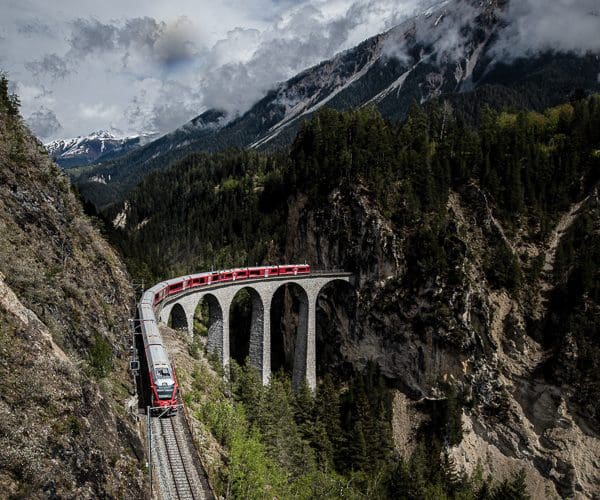
How do I know when I need one?
Good question, and unfortunately that can be tricky. The rules change regularly and the information is not always easy to find. As a general rule, you will need one on any high-speed train in Western Europe, and on any sleeper train.
On local and regional trains it’s usually not necessary to have a reservation. For our full guide on this, head to our Interrail reservations guide. When you book with us, we’ll buy you all the passes, tickets and reservations you need, tell you which ones to use and when, and let you know where you can travel without any. Easy!
If you want to check requirements, the best app for train travel in Europe is DB Navigator. This gives you pretty up to date information about all European services as far as possible.
How much does an Interrail/Eurail Reservation cost?
The cost varies depending on each country’s rail services but generally falls between 5 euros and 30 euros.
If you’re looking to save money and you aren’t short of time, it might be worth seeking out slower journeys so that you can avoid paying for reservations on certain routes – plus, you might get an awesome view!
When we book trips for our customers, we work out the most cost and time efficient way to do each journey. Using our comparison software, we find the best possible combination of full fare tickets, rail passes and reservations. This means we can work out the best possible cost. That means we reduce the cost for you guys, while booking the journeys that make the most sense for your trip. Create your dream route here with our interactive map planner.
Is First Class worth it?
First class versus second class train travel in Europe:
Usually, trains in Europe have two class options – 1st and 2nd. On high-speed trains in Spain and Italy you may also find more options to suit various budgets and comfort levels. First class train travel in Europe usually costs significantly more than second class – first class tickets could be 3 or 4 times the price when bought on the day. You can also choose a first-class rail pass and first class reservations if you go for an Interrail or Eurail pass. These cost around twice the price of their second class siblings, but you also pay more for seat reservations.
The differences between first and second class trains are most noticeable in Western Europe – France, Switzerland, Germany, Netherlands, Spain and Italy all have pretty luxurious first class options. For train travel through Eastern Europe, there’s less of a difference as services are slower and trains older as a general rule. Here it might well not make a lot of difference whether you upgrade or not.
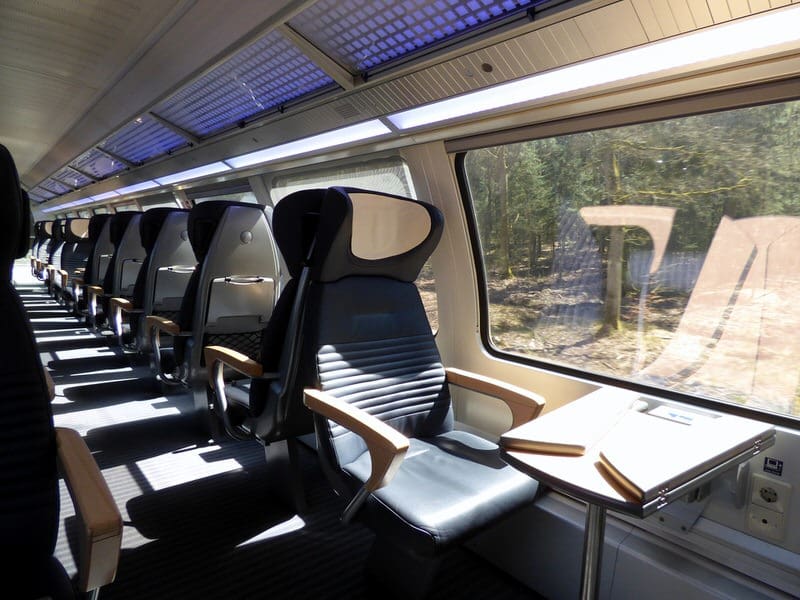
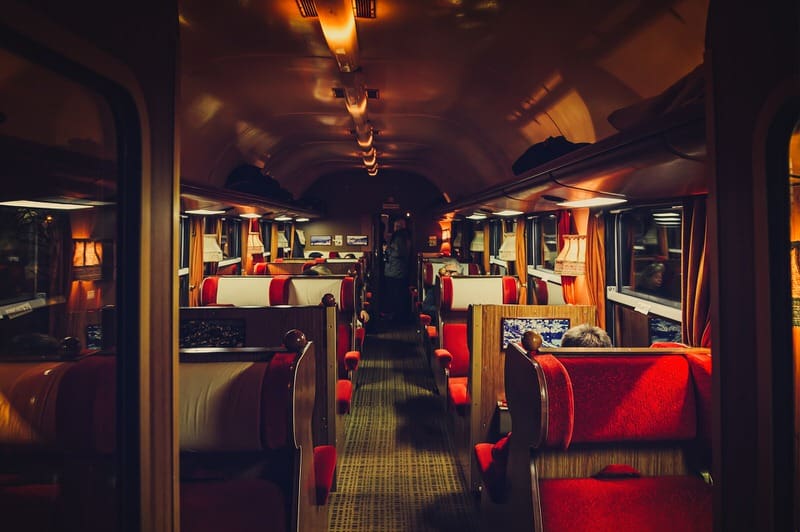
If you’re not sure whether this is something you might want to splurge on, check out the major differences in service level below:
- Second class trains provide basic but comfortable facilities, with drinks and snacks available to purchase. Some high-speed trains will offer free entertainment or wifi.
- You can always reserve a seat, whether you’re in first or second class.
- First class trains will provide more spacious seats with more leg room than second class.
- First class carriages will generally be quieter with fewer passengers.
- On major high-speed routes, first class may well offer additional perks, such as free drinks/snacks, free WIFI and complimentary newspapers.
- On regional routes, there are unlikely to be any additional benefits beyond more space. For these trains, it may not be worth paying the extra.
Overnight train travel
Overnight transport can be a great way to maximise your time when travelling Europe by train. All night trains will require an extra supplement to be paid, on top of your Interrail or Eurail pass.
As we’ve mentioned in our video guide, here are a range of different options for overnight travel. You can choose based on your preferred comfort level and budget between the following:
- Seat – the cheapest option, you’ll have a seat in a normal carriage, which reclines back a little bit.
- Couchette – you’ll share a cabin with other travellers. Couchettes are normally for 6 people and offer a small bed with sheet and blanket for you to use. A more comfortable option than a seat, but cheaper than a sleeper.
- Sleeper – depending on your group number, you’ll share your cabin with other travellers. Sleeper compartments are for up to 3 people, with a comfy bed, duvet, sink and space for hanging clothes. Often refreshments and breakfast are included.
- Private sleeper – the same as a sleeper, but you book out the whole cabin for yourself and/or your group. This is the most expensive option, offering the highest level of comfort.

How much does a night train supplement cost?
The costs vary a huge amount; a seat or couchette could start from as little as 10-30 euros. A private sleeper could set you back over 200 euros!
Some overnight trains – such as the night train from Venice to Paris – don’t offer Interrail reservations. Instead they just offer you a discount of around 25% off full price tickets with your pass. These might be best avoided if you’re looking to save money.
Advance Tickets
After all this talk of Interrail and Eurail passes, it’s easy to forget that these passes aren’t the only way to travel Europe by rail! In many cases rail passes provide great value, but not always. If your journey is short or will involve a lot of costly reservations, it might actually be cheaper to buy your tickets individually.
Advance tickets can be even cheaper than a pass – particularly if you check different booking sites for deals. The only down-side is that booking in advance means losing some flexibility. For the cheapest fares, you generally have to stick to the chosen service. If you miss it, you will be asked to buy a new ticket!
We’d advise booking as early as you can manage – at least 3 months is best in most cases. This will give you the greatest choice of times at the best prices. Different providers have different bookings horizons, so you’ll need to keep your eye on the ball to keep track of availability. You can use the handy DB Navigator app to reliably check which times are available across most providers.
It’s also worth noting that a large percentage of European train tickets are not available as E-tickets. Remember that you’ll need to factor in P&P processing time and costs – or use a local agent in your home country.
We will consider all these factors for you when you book with us, so you can rest assured that as the experts we will take all of this into account!
Train travel
in Australasia

Trains are a pleasant and relaxing way to get around Ireland. Modern air-conditioned intercity trains were introduced a few years ago as part of a massive investment programme, allowing frequencies to be increased. This page will get you started.
Where do the trains go?
How to check train times & buy tickets
Which station in Dublin?
Dublin to Cork InterCity trains
Dublin to Limerick, Galway, Kilkenny, Waterford, Tralee, Westport & Ballina by InterCity railcar
Dublin to Belfast by Enterprise express
Belfast to Londonderry by train
Belfast to the Giant’s Causeway by train
SailRail tickets Dublin & Republic of Ireland to/from London or any station in Britain
SailRail tickets Belfast & Northern Ireland to/from London or any station in Britain
Where do the trains go? Route map
As you’d expect, most rail lines radiate out of Dublin, see Irish Rail’s map of the Irish rail network.
How to check times & buy tickets
To check train times & fares in the Republic of Ireland and from the Republic to Belfast, use the Irish Railways website www.irishrail.ie.
To check train & bus times in Northern Ireland and from Belfast south to Dublin, use the journey planner at www.translink.co.uk. Translink is the Northern Ireland transport organisation which includes Northern Ireland Railways (NIR) and Ulsterbus.
You can call Irish Rail enquiries on 01 836 6222 when in Ireland or on 00 353 1 836 6222 from outside Ireland.
If you are prepared to pay for a full-price ticket you can just buy at the station on the day, there’s no need to book in advance. Full-price tickets cannot sell out, they have a fixed price and unlimited availability. Reservation is optional on Irish intercity trains and not possible at all on local & suburban trains (including all Northern Irish domestic trains), if you choose not to reserve a seat you just board the train and sit where you like, in any empty unreserved seat. just as on trains in Great Britain.
However, for longer journeys if you are prepared to book in advance and commit to a specific train with limited or no refunds or changes to travel plans allowed, you can save money by buying a cheap advance-purchase ticket at www.irishrail.ie. You collect tickets at the self-service ticket machines at any main station.
Tip: How to travel 1st class, cheaply. Irish Rail has no 1st class semi-flex or advance fares, only 1st class full-flex. But you can buy an upgrade to 1st class for the difference in price between full-flex standard and full-flex 1st, which can be used with any standard class ticket, even an advance-purchase one. Simply buy a cheap standard class ticket, then use www.irishrail.ie again, this time clicking the Free travel pass or valid ticket link beneath the journey planner. Read the advice here (external website, please let me know if that link stops working). This works from Dublin to Belfast, too.
Which station in Dublin?
Dublin Heuston.
Heuston station is the terminus for trains heading west & southwest from Dublin to Cork, Limerick, Galway, Kilkenny, Waterford, Tralee, Westport & Ballina. Opened in 1846 as Dublin Kingsbridge station, it was renamed Heuston in 1966 after Se�n Heuston, a young railway worker who commanded a nearby post in the 1916 Easter Rising. It’s located 3km (2 miles) west of Dublin city centre so it’s best to take the frequent Luas tram (www.luas.ie) which links Heuston station with the city centre and Connolly station every few minutes from early morning to late at night. It has 9 platforms. As it’s a terminus, there is easy level access between tram stop/taxi rank/street, concourse and all platforms. For more about the station’s history see en.wikipedia.org/wiki/Heuston_railway_station.
Dublin Connolly.
Ireland’s busiest station, Dublin Connolly is the station for Belfast, Sligo, Wicklow, Wexford, Dun Laoghaire & Rosslare, sitting on the north-south tracks which pass through Dublin on a viaduct. Concourse & platforms are one floor up from street level. Platforms are numbered from east to west, platforms 1-4 are north-facing terminus platforms (trains to Belfast use these), platforms 5-7 are through platforms (DART suburban trains & southbound trains to Wicklow, Wexford & Rosslare use these). The station opened in 1844 as plain Dublin Station, later renamed Dublin Amiens Street. It was renamed Dublin Connolly in 1966 after Irish revolutionary James Connolly.
Dublin to Cork by InterCity train.
These smart modern trains link Dublin & Cork virtually every hour in 2h50, via Limerick Junction (for Tipperary) and Mallow (for the line to Tralee). Change in Cork for the local train to Cobh. These trains have 1st & standard class with a catering car and free WiFi. The full Irish breakfast on morning trains from Dublin is as good a breakfast as you’ll have on any train anywhere! They were introduced in 2005-2006. Catering is suspended in 2022, may return in 2023.
Dublin to Galway, Limerick, Waterford, Sligo, Wexford, Rosslare by InterCity railcar
These smart modern air-conditioned railcars are the new face of Irish Railways, built by Hyundai and introduced in 2008 onto all intercity routes from Dublin, other than the Dublin-Belfast and Dublin-Cork routes. Trains run roughly every 2 hours from Dublin to Galway, Limerick, Sligo, Kilkenny, Waterford, Wicklow, Wexford & Rosslare. Dublin to Galway takes 2h45, Dublin to Limerick 2h45.
Dublin to Belfast by Enterprise.
Fast, modern Enterprise trains link Belfast Lanyon Place (formerly known as Belfast Central) and Dublin Connolly in about 2 hours, with departures about every 2 hours. The service is jointly run by NIR and Irish Railways. You can buy cheap tickets from around �14.99 each way if you book online in advance, you should buy one-way or return tickets starting in Dublin at www.irishrail.ie and one-way or return tickets starting in Belfast at www.translink.co.uk/Services/NI-Railways.
Travel tip 1: Belfast’s Great Victoria Street station is often more convenient than Belfast Lanyon Place, as it’s next to the main bus station and the excellent Europa Hotel, and just across the road from the equally excellent National Trust-owned Crown Bar. If you hold a ticket for the Enterprise train between Belfast Lanyon Place & Dublin, you are entitled to a free transfer by regular local train between Belfast Lanyon Place and Belfast Great Victoria Street as no extra charge.
Travel tip 2: On the Enterprise, find a seat on the left hand side going south to Dublin, right hand side going north to Belfast, for the sea views north of Dublin.
Belfast Central was named after the Belfast Central Railway, not because of its location! It was renamed Belfast Lanyon Place in September 2018.
Video guide: Dublin to Belfast by Enterprise.
Belfast to Londonderry (Derry) & Giant’s Causeway by train.
Smart modern air-conditioned trains link Belfast Great Victoria Street and Belfast Lanyon Place (formerly Belfast Central) stations with the historic walled city of Londonderry, or Derry if you prefer, every hour, journey time around 2 hours 12 minutes.
To check train times, use the journey planner at www.translink.co.uk/Services/NI-Railways. These new trains have revolutionised rail travel in Northern Ireland, increasing in passengers by over 60% in the last few years. With comfortable seats, carpet, toilets, air-conditioning and a scenic route through the countryside and alongside the sea approaching Londonderry, it’s definitely the way to go.
I recommend a seat on the right hand side of the train going north to Londonderry, as that’s where the best scenery will be, alongside Belfast Lough and along the Foyle estuary.
Belfast Central was named after the Belfast Central Railway, not for its location! It was renamed Belfast Lanyon Place in September 2018.
For Belfast to the Giant’s Causeway, see the Giant’s Causeway page

Day trips from Dublin by train.
Railtours Ireland, Railtoursireland.com
If you want to kiss the Blarney Stone, drive the Ring of Kerry or walk on the Giant’s Causeway as a stress-free day trip from Dublin, Railtours Ireland deserves a special mention. They run daily tours from Dublin using a unique train-based concept that makes the famous sights & scenery of remote western & northern Ireland accessible as a day trip. They work closely with Iarnrod Eireann (Irish Railways).
You are whisked from central Dublin to Limerick, Galway, Cork or Belfast by comfortable air-conditioned intercity train, leaving around 7:00-7:30 am.
A coach meets the train and takes you on a guided tour into the countryside.
The range of tours includes kissing the Blarney Stone at Blarney Castle, driving around the Ring of Kerry, or to see the Giant’s Causeway, or to Bunratty Castle and the Cliffs of Moher, and more. There’s stops for lunch & photographs;
In the early evening the coach takes you back to the station and puts you on a fast intercity train back to Dublin, arriving (depending on the tour) 8:00-10:15 pm.
As well as 1 day tours they now also offer longer tours of Ireland, up to 11 days.
Railtours Ireland have now been established for over 20 years and get great reports. I’ve known them for over a decade and have used them myself on a couple of occasions, both memorable.
Book online at railtoursireland.com, or by phone. Please mention seat61.com when booking.
Tip: There’s a full cooked breakfast available in the restaurant car of some of the Irish Rail intercity trains they use out of Dublin, costing around �17 (�14). It’s as good a cooked breakfast as you’ll have on any regular scheduled train, so treat yourself!

Recommended guidebooks
You get more from a trip with a good guidebook, even in the age of the internet. For the independent traveller, go for either the Lonely Planet or the Rough Guide. Both series are excellent. Lonely Planet Dublin – Lonely Planet Ireland – Rough Guide Ireland. Also consider Ecoescapes Ireland, which lists eco-friendly places to stay.
Click the images to buy at Amazon.co.uk.
Hotels in Dublin, Belfast & Ireland
 My favourite hotel search site: www.booking.com
My favourite hotel search site: www.booking.com
www.booking.com is my favourite hotel booking site and I generally prefer booking my hotels all in one place here. You can usually book with free cancellation – this allows you to confirm your accommodation at no risk before train booking opens. It also means you can hold accommodation while you finalise your itinerary, and alter your plans as they evolve – a feature I use all the time when putting a trip together. I never book hotels non-refundably. I have also come to trust their review scores – you won’t be disappointed with anything over 8.0.
Tip: It can pay to compare prices across multiple hotel sites: HotelsCombined.com is a price comparison site which compares hotel prices on Booking.com, Hotels.com, Expedia, Accor, Agoda and many others. Though if there’s not much in it, I prefer keeping all my bookings together in one place at www.booking.com.
The Gresham Hotel, Dublin. Click here to check prices & book.
Perfectly located on Upper O’Connell Street in the heart of central Dublin, 10 minutes walk from Connolly Station, The Gresham is an iconic hotel, a Dublin landmark since 1817. The impressive facade is matched by a marble-floored foyer and bar, and comfortable carpeted lounges. Yet you can find rates from �90 for a double room, 4-star comfort at a remarkably good price. To check room rates & availability click here.
 |
 |
The Europa Hotel, Belfast. Click to check prices & book
For comfort and location, stay at the Europa. Opened in 1971, Belfast’s famous Europa Hotel has more history than many hotels three times its age. It was the hotel used by journalists such as Trevor MacDonald, Kate Adie, John Simpson during the Troubles in the 1970s and 80s, when it earned the title of Most Bombed Hotel in Europe. Indeed, it suffered so many bomb attacks and had so many windows boarded it up, it was also known as the Hardboard Hotel. Yet it stayed open in spite of everything, a true survivor. And today it’s a fabulous place to stay, ideally located next to Great Victoria Street Station and across the road from the famous Crown Bar. You’ll find a book about the history of the hotel in your room for you to read, and a display case on the first floor near the piano with some hotel memorabilia. There’s also a railway connection, as it was built on the site of the Great Northern Railway terminus, the ancestor of today’s Great Victoria Street station.
Can i travel from ireland to mainland europe by train
Direct ferries from Ireland to mainland Europe offer a great alternative to UK landbridge routes, which are now available from Irish Ferries, Cobelfret (CLdN), Brittany Ferries and Stena Line.
Have you considered taking the direct ferry from Dublin to Rotterdam or Dublin to Zeebrugge instead of the Dover to Calais landbridge? There is far less traffic on these routes and it can prove to be much less hectic.
Here are five other reasons why you should consider a direct ferry from the Republic of Ireland to mainland Europe.
Reduce the number of ferries you have to take 
There are many direct routes from Ireland to mainland Europe going from a number of major ports such as Dublin, Rosslare, Santander, Cherbourg and Rotterdam. This means that you can take just one ferry all the way to your destination, sit back and relax instead of worrying about traffic and possibly not making your next sailing.
Rest time
As mentioned; taking a longer, direct ferry instead of two shorter ferries and some driving in between means more rest time for the driver. They can have a decent sleep, eat properly and relax knowing that they are on the way to their destination. This also means that when you might have normally had to send two drivers to make a journey more efficient by avoiding delays whilst the other driver rests, you can just send one driver, cutting down on your costs and freeing up the availability of your drivers for other jobs.
Less paperwork
As you are only taking one ferry, there is much less paperwork to deal with due to the simpler declarations and no need for other papers and documents that are required for using the UK as a land bridge. This means less time figuring out what paper work you need and less stress relating to worrying that you have everything you need with you. In the future, skipping out the UK all together will also mean avoiding any EU/UK customs procedures that may be in place. We aren’t sure what procedures will be in place post-Brexit, but with alternative direct routes to mainland Europe, it won’t affect your journey.
Cost effective
You can significantly reduce your costs by travelling directly from the Republic of Ireland to mainland Europe due to mileage savings and their vehicle not being driven as much. You can also save on food and drink costs as meals and drinks are often included in ferry tickets, meaning that usually when your driver would have to have found their own meals at a local pub or fast food place that would cost you expenses, they will be provided with complimentary meals. You can also make savings on fuel as your driver will not be doing as much driving as would be required if entering the UK at Liverpool, then driving across England to cross over at Dover to get to mainland Europe. This also cuts down on parking costs at ports or along the way, as the driver will be doing their sleeping on the ferry so there will be no need for overnight parking along their route. It is also easier to transport goods unaccompanied on longer haul ferries and have them collected by courier on the other side, meaning costs are kept to a minimum regarding drivers.
Additional capacity
There is now additional capacity with Cobelfret (CLdN) and due to these routes between Republic of Ireland and mainland Europe being less busy than Dover <> Calais, there is a much higher chance of getting on a sailing at the time that you want. Such routes as Dublin <> Zebrugge and Dublin <> Rotterdam run multiple times a day and are rarely completely booked up.
If you are interested in making your journeys to Ireland from mainsland Europe more efficient and cost effective, get in contact with us. We have the best direct routes to and from the Republic of Ireland.
Source https://www.euroventure.com/planning/travelling-europe-by-train-need-to-know/
Source https://www.seat61.com/train-travel-in-ireland.htm
Source https://www.freightlink.co.uk/knowledge/articles/five-reasons-use-direct-ferry-ireland-mainland-europe